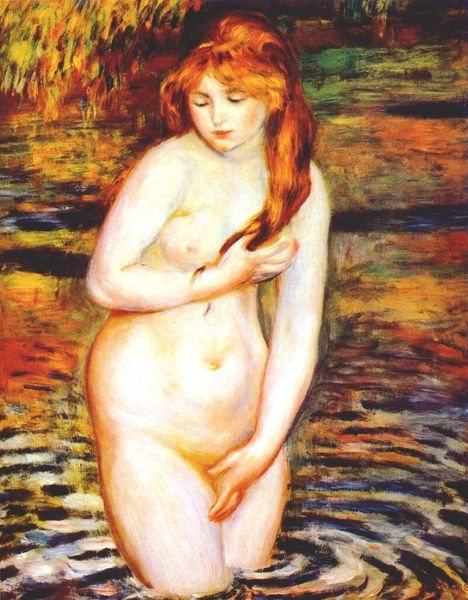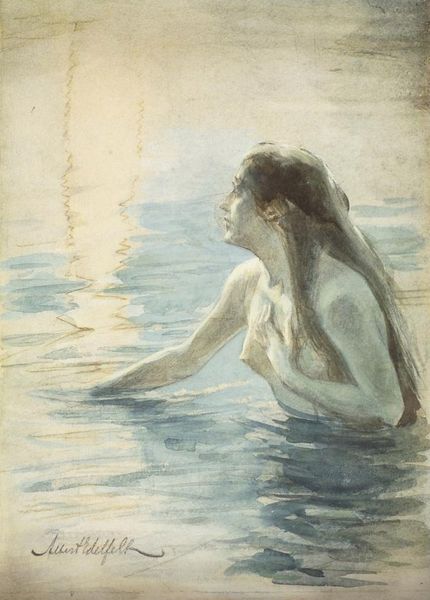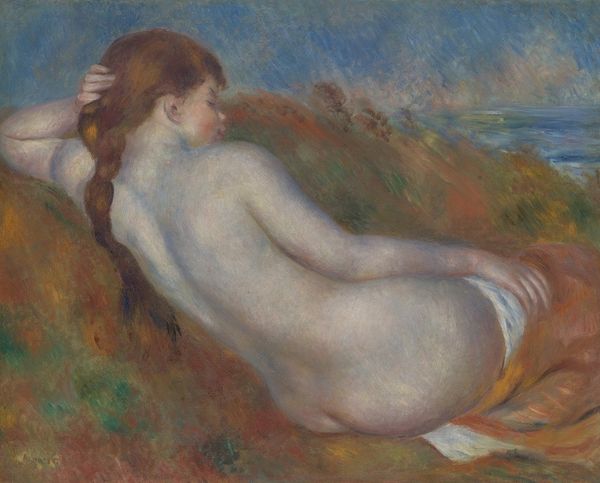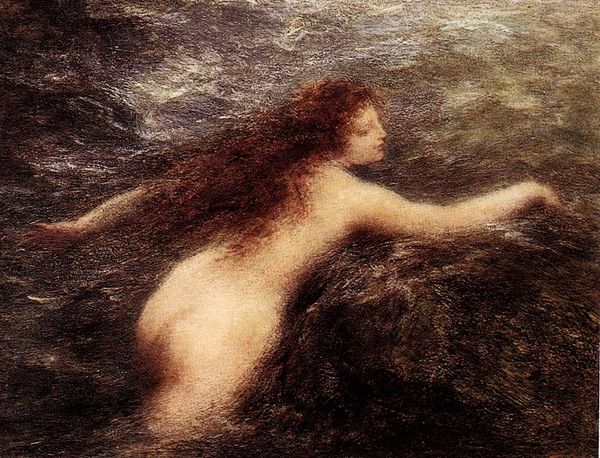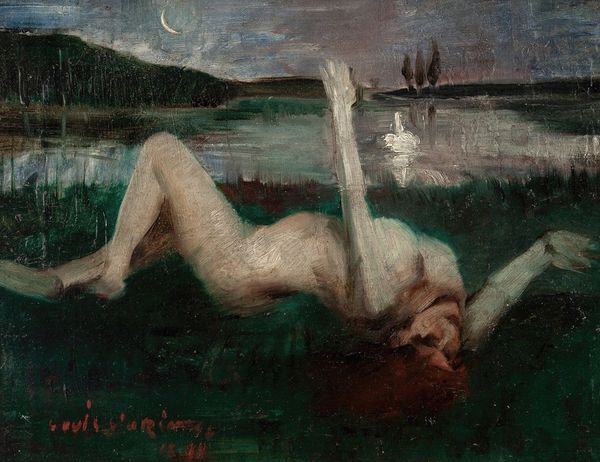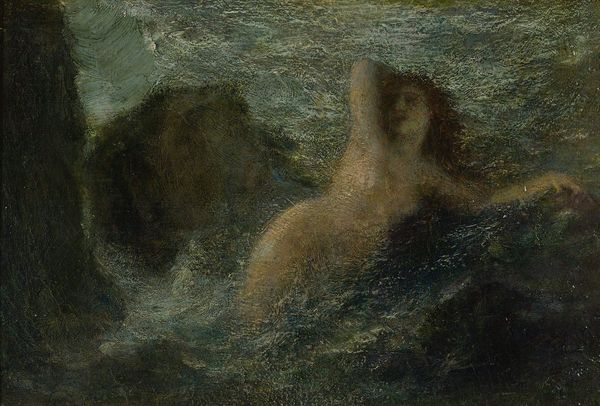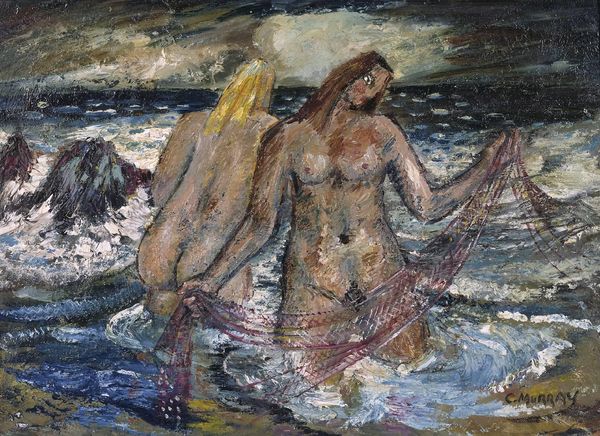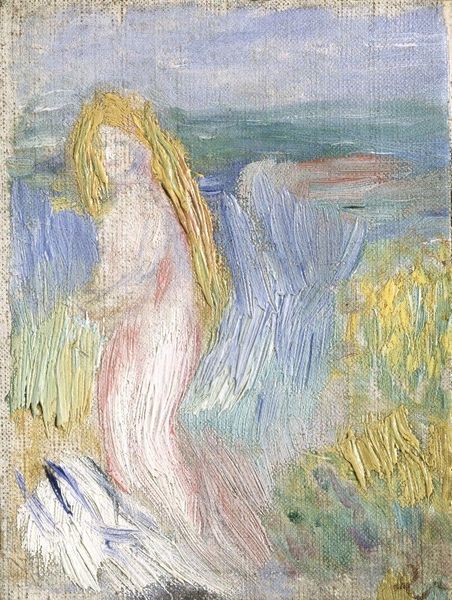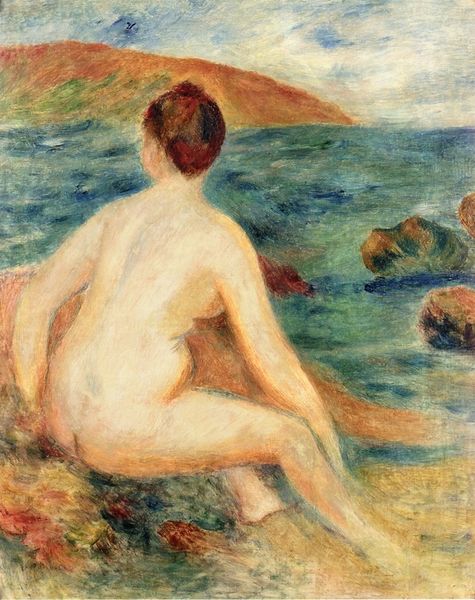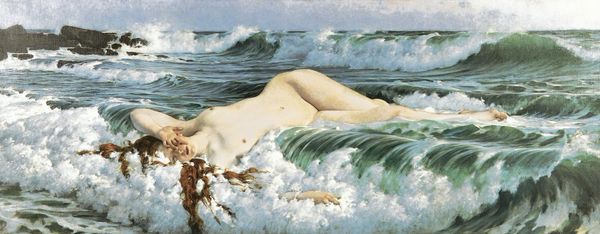
painting, oil-paint
#
painting
#
oil-paint
#
landscape
#
figuration
#
oil painting
#
expressionism
#
mythology
#
symbolism
#
nude
#
expressionist
Dimensions: 100 x 314 cm
Copyright: Public domain
Editor: So, this is Edvard Munch's "The Lady from the Sea," painted in 1896. It's oil on canvas, and the composition, with its deep blues and a nude figure emerging from the water, feels almost dreamlike. The landscape elements are simplified, almost abstracted. How do you interpret this work, considering its visual components? Curator: Focusing on the formal elements, one immediately notes the stark contrast between the verticality of the architectural form rising from the water and the horizontal extension of the female figure. This juxtaposition creates a dynamic tension, heightened by the chromatic intensity of the blues against the figure’s pale skin. The artist’s brushstrokes, particularly in rendering the water, contribute to a sense of unrest, a visual turbulence. Do you perceive a correlation between the figure's expression and this turbulent rendering of the environment? Editor: Definitely. Her gaze is intense, maybe even troubled, mirroring the visual unease of the scene. I was also thinking about semiotics and wondering about the architectural pillar--can we see it as a phallic symbol, creating a symbolic tension with the feminine figure? Curator: Precisely. Considering structuralist perspectives, one might posit the entire composition as a dialectic—a play between opposing forces. The phallic symbol as you say juxtaposed with the fluid feminine form. The gaze confronts the viewer, engaging us directly in this symbolic arena. The artist forces the viewer to grapple with a central semiotic enigma: What exactly is Munch trying to say about male/female relations? Is there such thing as male "striving" against the fluidity of existence and relationships? Editor: It's interesting how focusing on the structure and composition unlocks so many potential meanings. Thanks for sharing your insights! Curator: Indeed. Through attentive analysis of the visual construction, we approach a deeper understanding of the artwork's potential semiotic and philosophical significance.
Comments
No comments
Be the first to comment and join the conversation on the ultimate creative platform.

